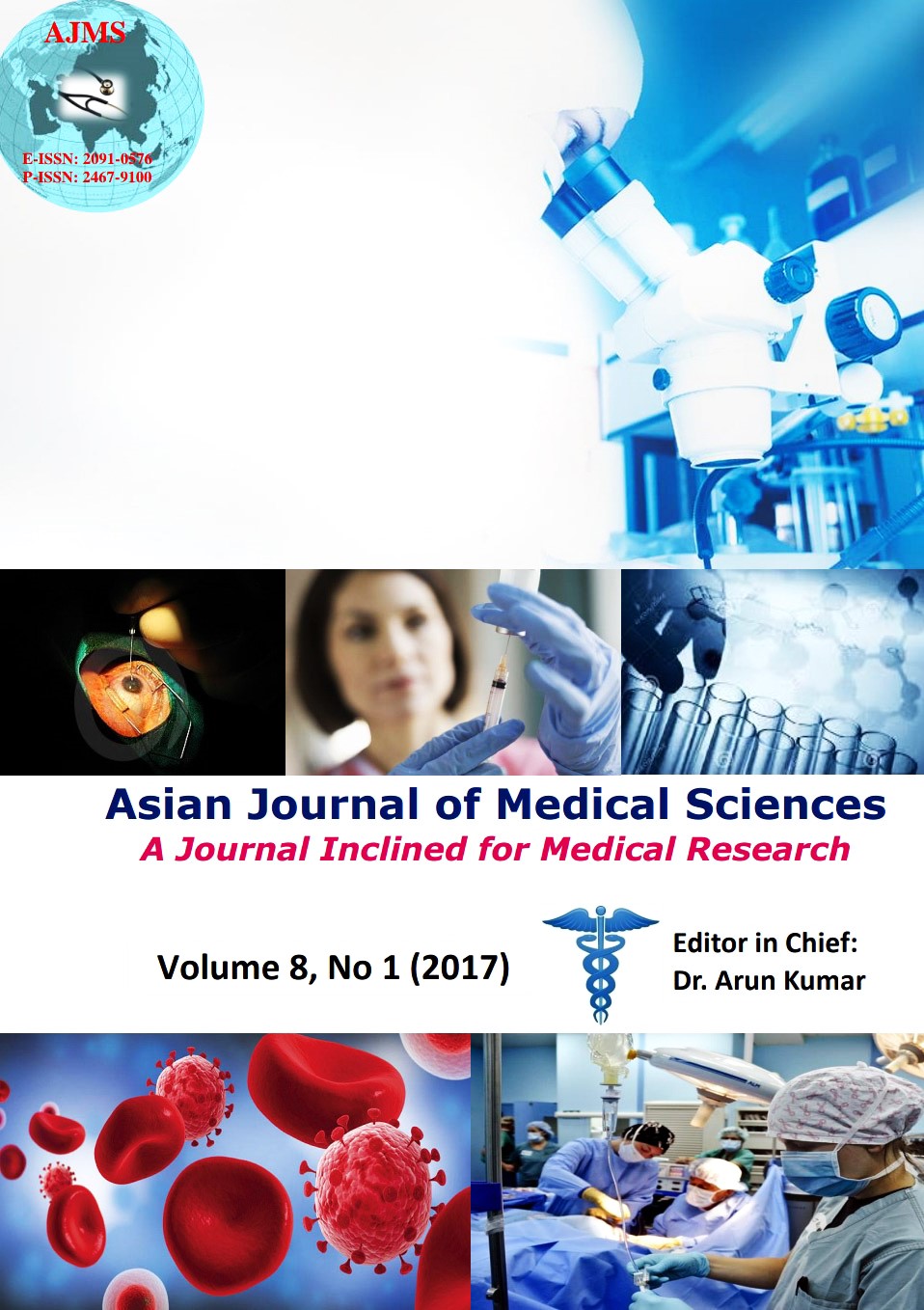A clinico-mycological study of onychomycosis at a tertiary care center
Keywords:
Onychomycosis, nondermatophytes, dermatophytes, Di-Methyl Sulfoxide (DMSO), Potassium hydroxide (KOH)Abstract
Background: Onychomycosis continues to be worldwide problem constituting a large bulk of cases attending the dermatology outpatient department. Fungal infections of nails have been partly studied,because it has been considered more of a cosmetic problem than a health problem. Although not life threatening, onychomycosis may have significant clinical consequences such as secondary bacterial infection, chronicity, therapeutic difficulties and disfigurement, in addition to serving as reservoir of infection.
Aims and Objectives:
- To find out the prevalence, etiology and clinico-mycological correlation of onychomychosis among clinically suspected cases.
- To compare the microscopy findings using potassium hydroxide (KOH) preparation with potassium hydroxide- dimethyl sulfoxide (KOH-DMSO/DMSO) preparation.
- To compare demographic and clinical data inonychomycosis and fungus negative groups
Material and Methods: The study was conducted from October 2011 to October 2013, in the department of Microbiology of a tertiary care hospital in Mumbai, including 204 patients clinically suspected of onychomycosis. Nail scrapings were collected depending upon site, type of nail involvement and subjected for microscopic examination using 20% KOH and KOH DMSO (10-40%), followed by fungal culture.
Results: Out of 204 patients, 78 (38.2 %) were diagnosed having onychomycosis, 72 (92.3%) patients were positive by direct microscopy and 45 (57.7%) by culture. DMSO preparation offered a faster clearing of background but in KOH preparation fungal morphology was better maintained even after 24 hours. In culture positive cases, isolation of dermatophytes was most common (42.2%), followed by Candida species (31.1%) and nondermatophytes (26.7%).
Conclusion: This concludes that laboratory diagnosis of onychomycosis is essential as many conditions of nail mimic onychomycosis. Though commonest causative agents of onychomycosis are dermatophytes, number of cases caused by Candida species and nondermatophytesare on the rise.
Asian Journal of Medical Sciences Vol.8(1) 2017 48-57
Downloads
Downloads
Additional Files
Published
How to Cite
Issue
Section
License
Authors who publish with this journal agree to the following terms:
- The journal holds copyright and publishes the work under a Creative Commons CC-BY-NC license that permits use, distribution and reprduction in any medium, provided the original work is properly cited and is not used for commercial purposes. The journal should be recognised as the original publisher of this work.
- Authors are able to enter into separate, additional contractual arrangements for the non-exclusive distribution of the journal's published version of the work (e.g., post it to an institutional repository or publish it in a book), with an acknowledgement of its initial publication in this journal.
- Authors are permitted and encouraged to post their work online (e.g., in institutional repositories or on their website) prior to and during the submission process, as it can lead to productive exchanges, as well as earlier and greater citation of published work (See The Effect of Open Access).




